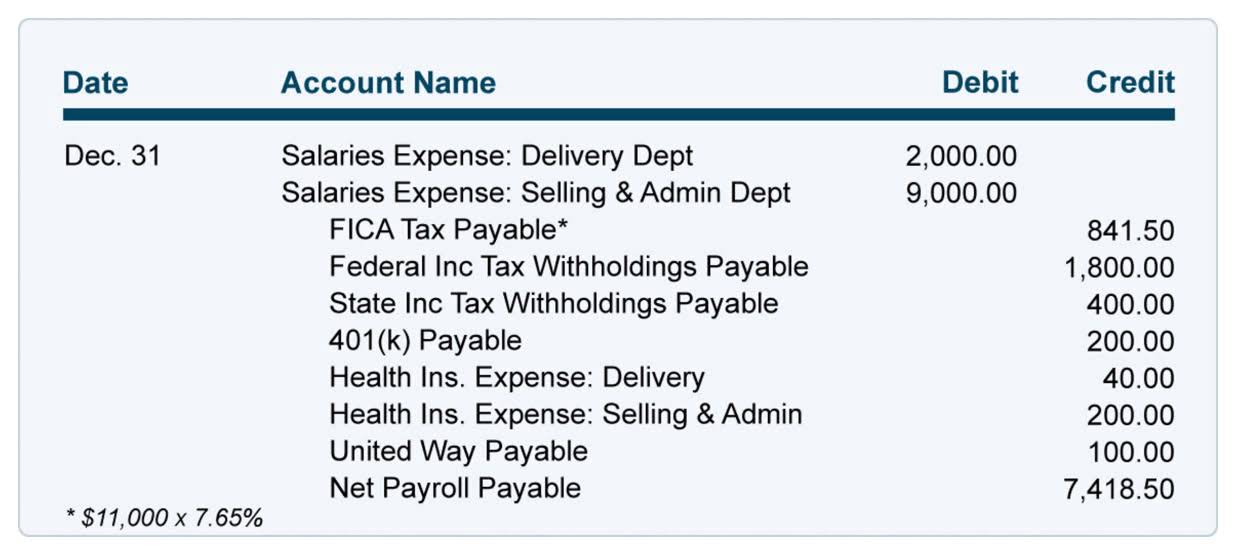Nonprofit Accounting: A Guide to Basics and Best Practices

If you have Bookstime to train new volunteers more frequently than necessary, then it will affect your team’s productivity. GrowthForce accounting services provided through an alliance with SK CPA, PLLC. If you work in the nonprofit sector, you’ll know that every dollar matters — and keeping proper track of that money matters even more. The more you know about your donors, the better your relationship-building initiatives can be.
- The easiest way to do this is with quality accounting software that helps create standardized reports.
- If the value of the donation is small (below $5,000) the IRS will let you determine a donation’s fair market value yourself, usually based how much comparable goods and services are selling on the market.
- While some donors may focus solely on program expenses, enlightened supporters recognize that investing in overhead is crucial for a nonprofit’s financial health and mission fulfillment.
- The outcome is a clear view of how donations are being used to share with an accountant, board members, or other stakeholders.
- Instead of a “Balance Sheet”, which a for-profit business would be required to generate, a nonprofit would instead issue a “Statement of Financial Position”.
What are some best practices for non profit bookkeeping?
Although it’s possible to manually generate financial statements from your ledger or spreadsheet, it takes a ton of accounting knowledge and time to do it right. In most cases, it’s better to let your accounting software or a bookkeeper take care of this step for you. As mentioned, nonprofit organizations have tax-exempt status, meaning they don’t have to pay federal taxes to the IRS under Section 501. This section regulates the tax status of charities, religious organizations, and nonprofits. The statement of financial position represents the nonprofit version of the balance sheet. This statement provides insight into how much a nonprofit owes, what it owns, and how much money is left.
And why are sound accounting practices important for nonprofits?

As mentioned above, you can manage bookkeeping yourself using software like QuickBooks. QuickBooks even has a version for freelancers and self-employed individuals. Let’s review some tasks involved in bookkeeping, especially as they relate to your business’s day-to-day operations. If you’ve been managing a nonprofit for a while, you’re probably familiar with this special day.
Lack of Internal Controls
The solution you decide on should also allow you to do some form of fund accounting. This means instead of piling your money into one big “cash” account, you’ll need to distinguish between recording transactions and track separate buckets of money. Typical categories include program services, management and general, fundraising, and other sources of income. You can use the statement to assess the usage of funds, track performance, and make decisions about future operations.

Hiring vs. Outsourcing Accounting Services

By establishing robust internal controls, nonprofits can protect their assets, ensure accurate financial reporting, and maintain donor trust. Bookkeeping ensures accurate financial records, helping nonprofits manage their funds efficiently, comply with legal requirements, and maintain transparency with donors. These tools are just the accounting services for nonprofit organizations starting point to carefully managing the bookkeeping for your nonprofit organization.
Bookkeeping for Nonprofits: A Basic Guide & Best Practices
The rules and specificity around nonprofit organization accounting pay off during tax season when charitable organizations are eligible for generous tax benefits. Managing finances is a year-round effort that simplifies that busy filing season when the time comes to submit reports. The main difference between non-profit and for-profit bookkeeping is the application of fund accounting principles for non-profit organizations. Non-profit bookkeeping is the practice of maintaining detailed, accurate records of all revenues and expenses.
- The cash-basis method is usually simpler to maintain than the accrual-basis method and may be adequate for smaller nonprofits.
- The statement of financial position represents the nonprofit version of the balance sheet.
- In addition, checking in on the budget one or more times each month will allow you to adapt to change.
- 1-800Accountant assumes no liability for actions taken in reliance upon the information contained herein.
- This means dividing tasks, setting approval steps, and doing nonprofit audits.
- No matter how good the fight, you need to start with sound finances, so you can build a better world on a sturdy foundation.
Why choose nonprofit accounting software?

Nonprofit organizations are entities organized and operated exclusively for educational, social, professional, charitable, health, or other nonprofit purposes. While business stakeholders are concerned with profits, nonprofit stakeholders and board members want to know if the resources are properly utilized and allocated. Nonprofit organizations have a tax-exempt status with the Internal Revenue Service (IRS). If they want to maintain this status, they need to do accurate bookkeeping.
Let’s dive deeper into the captivating world of nonprofit accounting and unravel the intriguing distinction between accounting and bookkeeping in the nonprofit world. Bookkeeping and accounting may seem similar at first glance, but don’t be fooled! These two concepts are actually worlds apart, and grasping their distinctions will revolutionize the way you delegate responsibilities within your team—and the way you budget for impact.
- Nonprofits are vital organizations that differ from for-profit companies in many ways.
- A nonprofit accountant requires a minimum of a four-year college education with a degree in the field of accounting.
- Automation can streamline bookkeeping processes, reduce manual data entry, minimize errors, and save time.
- Accounting involves close attention to detail and a deep understanding of the organization.
- Properly paying employees can help boost morale and motivation within the organization, leading to greater job satisfaction, improved productivity, and better quality services from the nonprofit.
- To do this, you’ll need to set reasonable expectations for your income, expenses, and financial goals.
- Remember to categorize expenses, include non-monetary contributions, and focus on cash flow to create a comprehensive financial roadmap.

Your nonprofit should regularly compare your budget to the actual income and expenses throughout the year. Combine historical data, your current budget, and your actuals for the year-to-date to ensure your budget is on track, allowing you to change course as needed throughout the year. A nonprofit’s Statement of Activities is a report generated in place of an Income Statement, which a for-profit business would be required to file. The Statement of Activities shows changes in the value of the nonprofit’s net assets. For your organization to succeed, you’ll need a great team who is happy with their compensation. When it comes to payroll management, your nonprofit should be doing your accounting just like any other business with employees.
